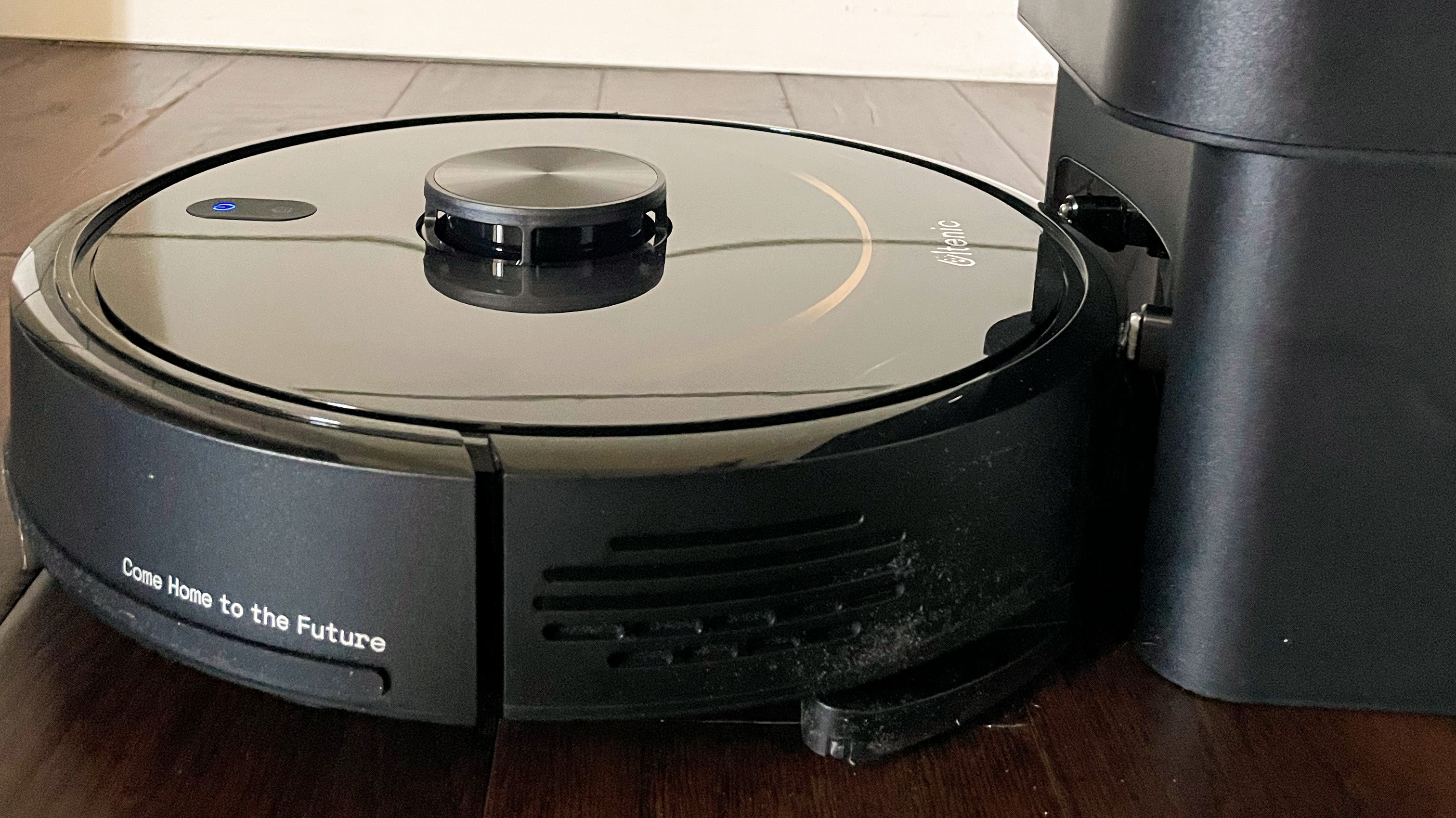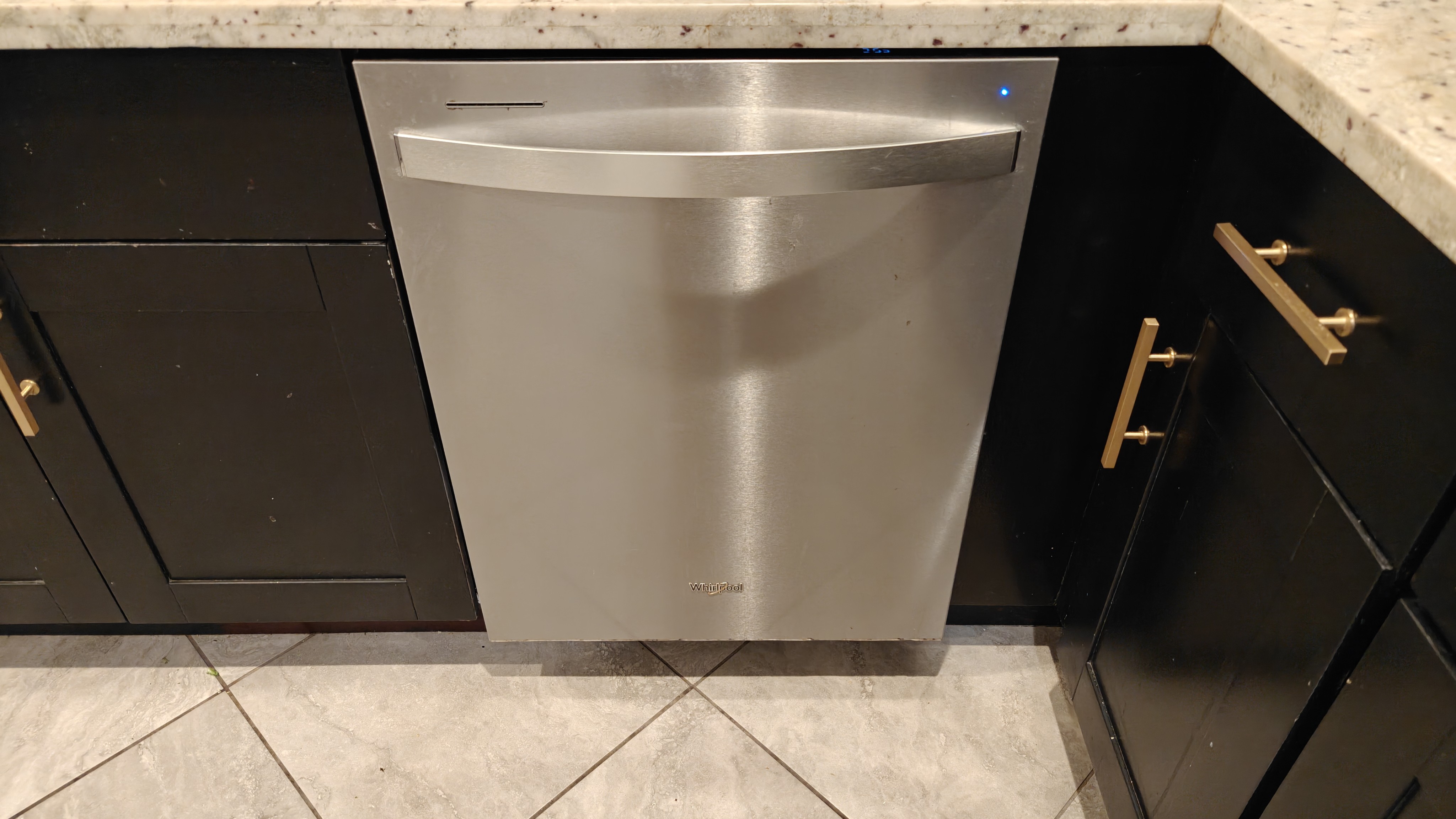Top Ten Reviews Verdict
The Ultenic Robot Vacuum T10 Elite is sufficient for light cleanings on hard surfaces but struggles on carpets and around rug edges.
Pros
- +
Comes with a self-emptying bin
- +
Mop function works well
- +
Easy to use app
Cons
- -
Narrow roller compared to other models
- -
Lackluster suction power
- -
Self-emptying bin very loud
Why you can trust Top Ten Reviews
Battery Capacity: 3200mAh
Charging Time: 5 hours
Self-Emptying Bin?: Yes
Number of Included Air Filters: 2
Number of Included Side Brushes: 2
Number of Included Mops: 2
App?: Yes
Remote Control?: Yes
Product Weight: 17.97lbs
Robot vacuums are a mixed bag of performance. Having tested several robot vacuums in the past, and having seen robot vacuums that leave your floor spotless, to seeing one hurdle itself down the stairs because the sensors didn’t work properly, curiosity was piqued when the Ultenic Robot Vacuum T10 Elite arrived for review.
I was particularly excited about the T10 Elite having a self-emptying bin. My current robot vacuum doesn’t, and it is a pain to manually empty. Especially considering the small size of my robot vacuum’s bin, it must be emptied often.
Aside from making floor cleaning duties virtually hands-free with a self-emptying bin, it also features a mopping setting beyond its normal vacuuming capabilities. When you consider the ability to remove pesky footprints from hardwood surfaces, as well as picking up all the dirt and dust off your floors, the Ultenic Robot Vacuum T10 Elite had all of the initial makings (at least on paper) to be a winner. Testing would help determine whether this robot vacuum was a true contender or just a paper tiger.
The T10 Elite was tested on both hardwood floors and carpet. Vacuuming and mopping testing included how well it vacuumed oats, bread crumbs, dirt, and rice. The mopping feature was also tested, removing dirty footprints from the hardwood floor.
After testing, the robot vacuum certainly has its strengths and weaknesses. The question then became – are the T10’s Elite’s weaknesses too glaring to be considered one of the best robot vacuums available?

Jonathan Knoder is a freelance writer and editor and covers a variety of topics from tech to lifestyle, but he has a special affinity for audio gear and smart home tech. In the smart home space, he’s tested and reviewed everything from smart locks and home security cameras to robot vacuums and air quality monitors.
His writing has been featured in Top Ten Reviews, Tom's Guide, SPY.com, Security Sales and Integration, and Salt City Hoops. Outside of work, Jonathan is usually playing guitar and drums at the park with his dog or pretending to be a golfer at his local golf course.
Jonathan tested the robot vacuum on his home's 1,200 square foot main floor, which is completely hardwood and rugged areas. He had the robot vacuum clean the main floor and vacuum up oats, bread crumbs, and rice spread in his kitchen area.
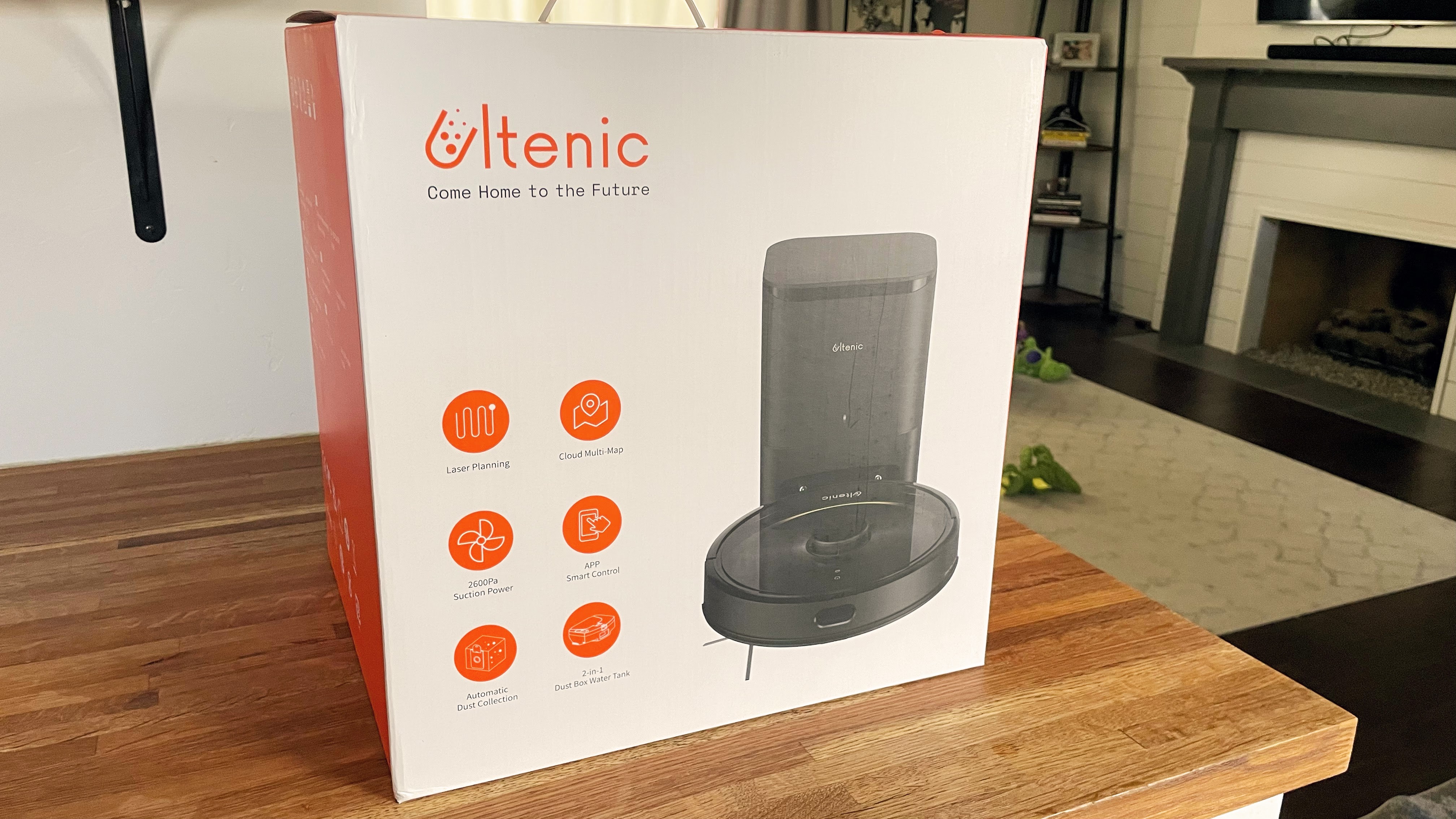
Ultenic T10 Elite: First impressions
Out of the box, the Ultenic T10 Elite looks and even sounds exactly like the Prosenic M8 robot vacuum that I currently use. The app is also eerily similar. The T10 Elite comes with a self-emptying bin, an extra side brush, a bag for the bin, an air filter, and a mop attachment.
The side brush easily snaps onto the bottom of the robot vac, and the mop easily attaches by sliding it into the back of the vacuum. After following the prompts on the app to connect to your home WiFi network, the complete installation only takes about 10 minutes.
Sign up to receive the latest news, reviews, buying guides and deals direct to your inbox
Once you’re ready for the initial cleaning run, I recommend following it around as it learns the map of your home - the robot vacuum tends to go into places it shouldn’t. For me, that includes the fireplace. Having experienced the initial cleaning of a robot vacuum before, I closed doors to rooms where I didn’t want the vacuum to go and barricaded the fireplace with a child gate. Of course, when your place is properly mapped after the initial cleaning, you can set boundaries for the robot vacuum to avoid during future cleanings.
The robot vac did come with a remote, but the remote doesn’t do much, and you get way more control using the app. You can’t set boundaries with the remote, for instance. Its most useful quality was to tell the robot vacuum to return home to recharge. Other than that, it's better to use the app.
The first cleaning went well. It had no problems getting over placemats or rugs in the kitchen, living room, or dining room areas. It also didn’t get stuck under the dining room table or any of our end tables, nor did it toss itself down the stairs (which I’ve seen happen before). It wasn’t until more heavy-duty cleaning opportunities were presented that the true cleaning abilities would be tested.
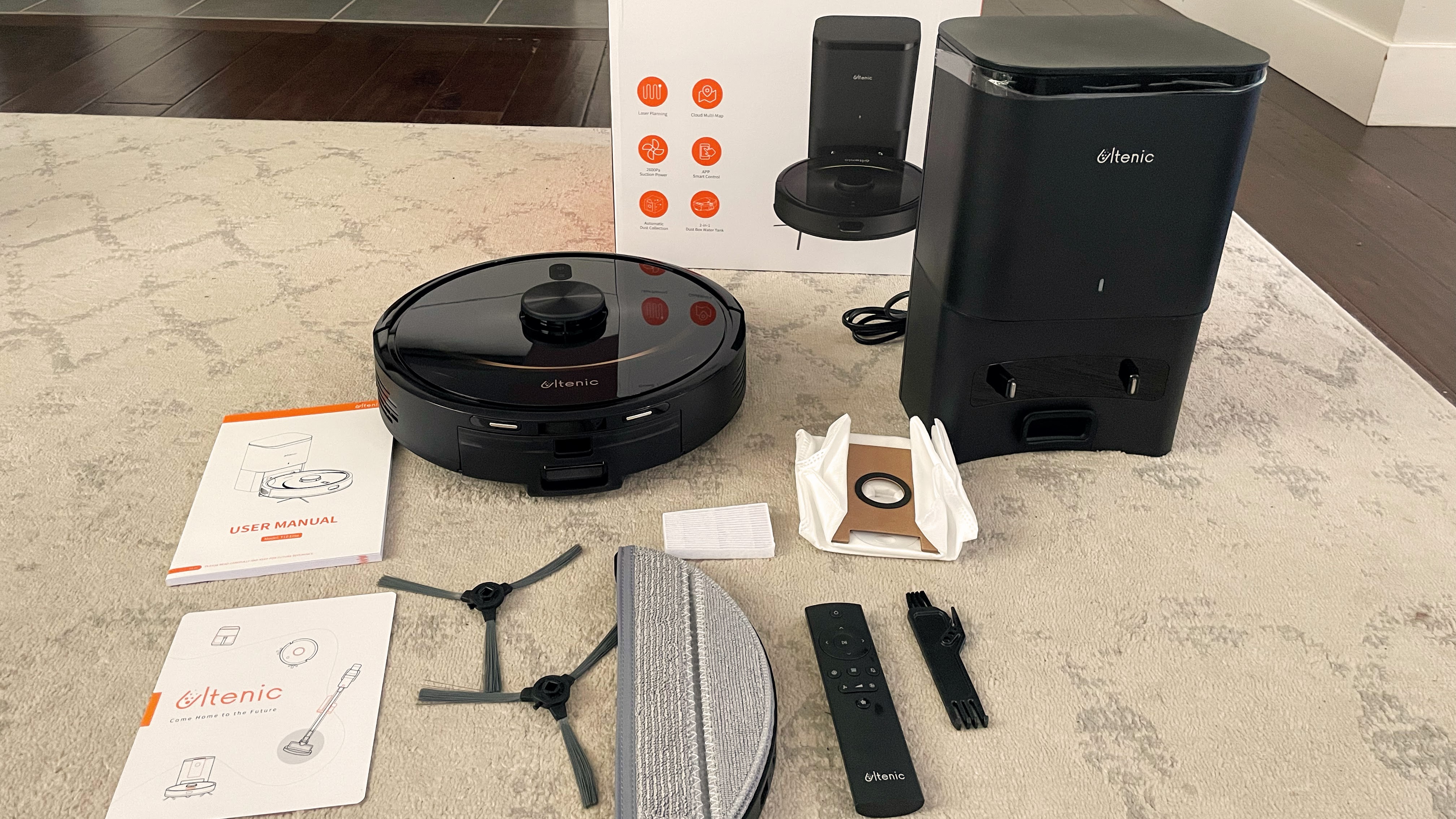
Ultentic T10 Elite: Price & availability
The Ultenic T10 Elite has a list price of $499.99, but at the time of this writing, it can be found on the manufacturer’s website for $299.99. It is also listed on Amazon at a 20% discount of $399.99
Score: 5/5
Ultentic T10 Elite: Design
Upon first glance, it's easy to suggest that the Ultenic T10 Elite looks like most vacuum cleaners. But when directly compared to my current robot vacuum, some minor differences potentially impact performance.
Overall, the Ultenic T10 is slightly smaller in circumference than my current robot vacuum – barely noticeable. But the biggest difference is the width of the roller (the piece that sucks debris into the vacuum). The T10 roller is less wide, providing more room for debris to miss the roller and not be vacuumed up.
The self-emptying base is a much better design than my current robot vacuum’s base. With my current robot vacuum, the vacuum has to place itself onto the base to charge. This can lead to the base being moved around and not charging properly. With the Ultenic T10, the bin/base is bigger and more sturdy. When it came time for the robot vacuum to return to the base and charge, there were never any issues.
Score: 3/5
Ultentic T10 Elite: Performance
For the first official cleaning test, oats were spread around the hardwood floor in the kitchen area. I used the “spot cleaning” function in the app to have the vacuum only clean that specified area. That and the 'room' function are helpful if you have highly trafficked areas prone to more dirt, debris, or footprints. Instead of a general clean that can take upwards of 40 minutes (depending on the size of your home), you can have the robot vac clean those spots in a few minutes.
The first thing I noticed during this testing phase is that some oats would get trapped at the edge of the mop that snaps into the back. Upon a pass through the oats, it would look like the oats were getting vacuumed up properly, but when it would go over a bump, like from the hardwood onto a rug, a small pile of the oats would come out.
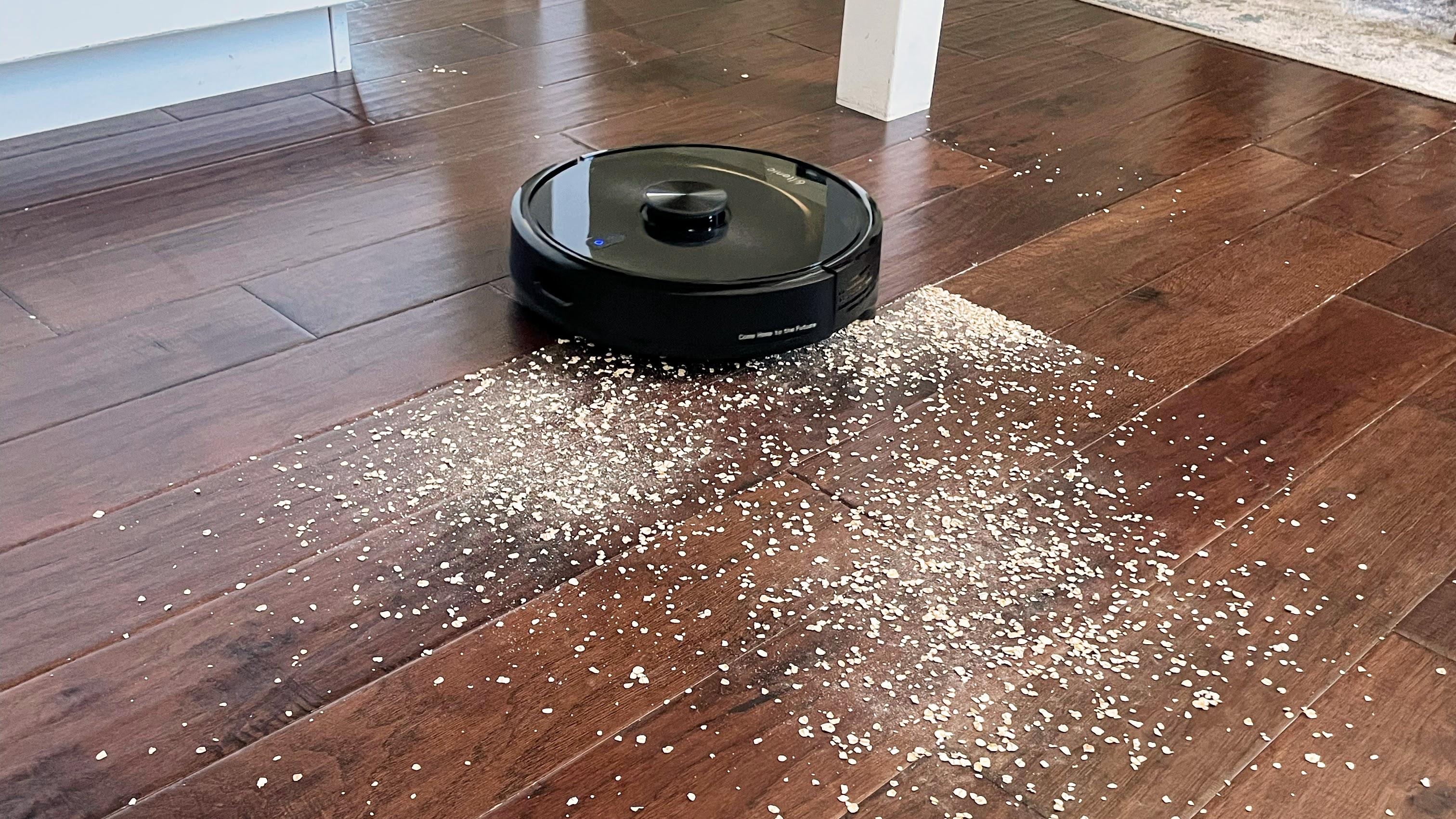
I thought maybe if I removed the mop from the back of the vacuum, this would eliminate the issue. But without the mop, the vacuum would kick debris everywhere. The mop needs to be attached to have a more thorough cleaning.
For the second test, I put thinner, more sand-like bread crumbs in the same area and used the same spot clean function. The results were worse than the oat cleaning test. The suction of the vacuum isn’t strong enough to suck out the bread crumbs from the grooves of the hardwood floor. There was also a significant amount of streaking. You can see the route and where the vacuum turns based on the remnants left behind. Also, the same problem of dumping a pile of debris would happen from hardwood to a slightly more elevated surface, like a rug.
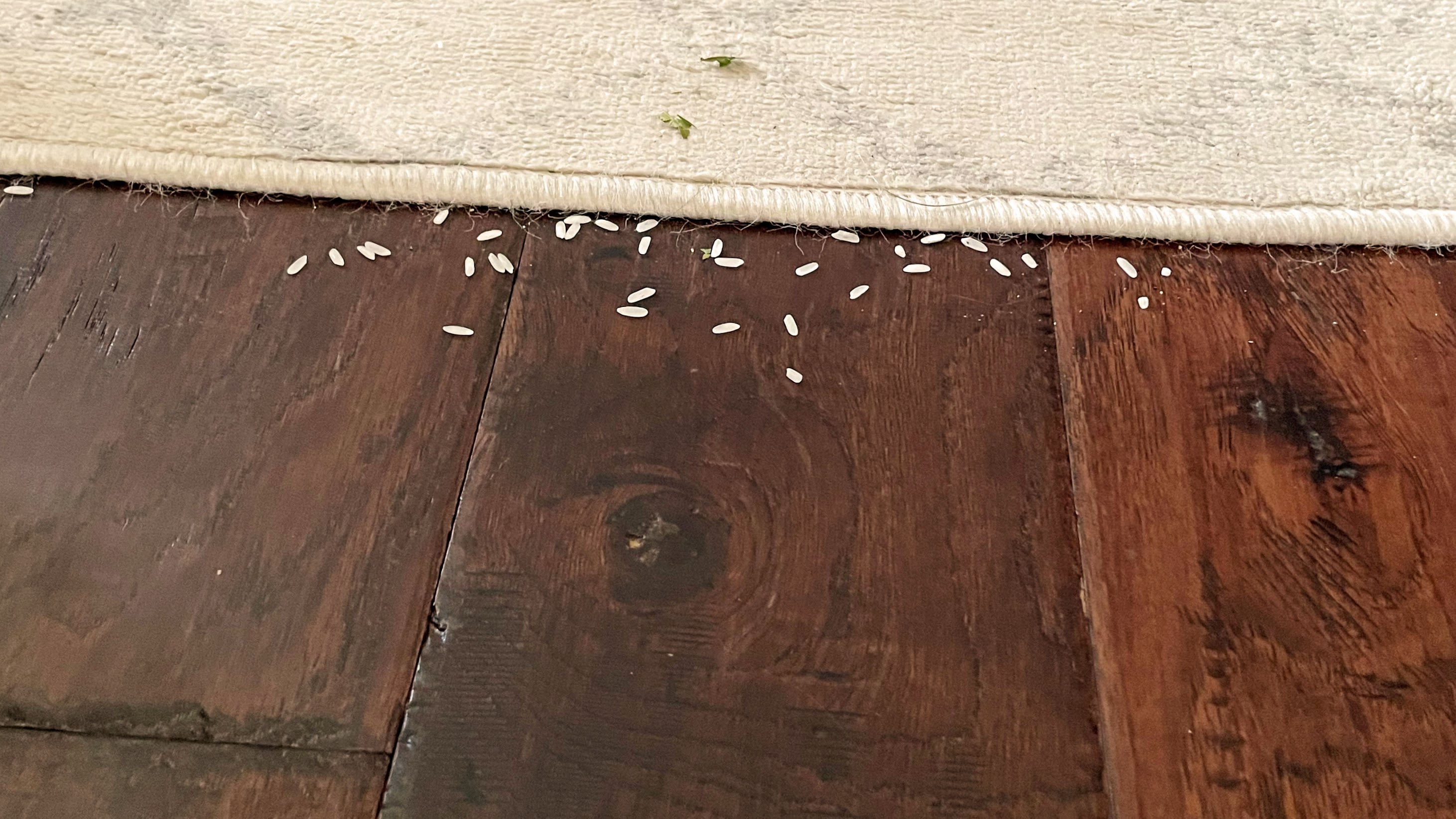
For the next test, I spread light dirt and debris from outside (some grass and leaves mixed in) and white rice (to better see) throughout my upstairs. I also took the rice and spread it out across the rug area to see how it would do on a carpeted surface. I ran the auto-clean function and let the robot make a full run throughout the house. The results weren’t terrible, but they were not great either.
The robot vacuum had a difficult time with edges, as there were still a lot of rice remnants along the baseboards in the hallways and along the edges of rugs that lay atop the hardwood floor.
Perhaps the most disappointing was the inability to vacuum the rice from the rug. The rice wasn’t ground into the rug either, but after it passed over it, most of the rice remained.
The mop function is a nice touch. You can adjust the amount of water in the app, but the default setting worked fine. I left footprints (as I often do) in the kitchen and used the mop function to remove the footprints. The mopping was the most successful aspect of the cleaning, as the footprints were gone after the cleaning.
Finally, the other major benefit I’ve alluded to is the self-emptying bin. It is so convenient for the bin to be emptied without intervention. With my current robot vac, I always leave a mess around the garbage can when I have to empty the dustbin manually. Also, your hands get dirty, and the dust particles float everywhere – it’s simply not a fun or convenient experience. If I were ever to buy a new robot vacuum, a self-emptying bin is a must.
When in operation, the T10 Elite makes out 70 decibels of noise. That’s around the same amount of noise you’d hear if you were on the highway in your car or the general rumblings of an office environment. The bin, on the other hand, is quite loud when the device self-empties. The noise level ramps up to about 87 decibels when it empties, which is closer to the equivalent of a blender turning on.
Score: 2/5
Ultentic T10 Elite: How Does it Compare?
Reviews
Dreame L40 Ultra Robot Vacuum Cleaner and Mop review: almost hands-free cleaning
Eureka J15 Pro Ultra Robot Vacuum review: hands-free cleaning for busy families
Dyson WashG1 Wet Floor Cleaner review: powerful suction for big and small messes
Shark AZ3002 Stratos Upright Vacuum review: a powerful cleaner for challenging debris
Ultenic U16 Flex Cordless Stick Vacuum review: an inexpensive choice for hard-to-reach areas
Eureka NEU800 Omniverse Multi-Function Upright Vacuum review: a powerful yet cheap cleaner
Shark AZ4002 PowerDetect Upright Vacuum review: Intuitive enough for all of your needs
As mentioned earlier, when the roller of the T10 Elite was compared to the Prosenic M8, the T10 was certainly less wide. Compare the T10 roller to the Samsung Jet Bot AI+ - unsurprisingly, the Samsung Jet Bot AI+ had a much better cleaning performance. The Samsung Jet Bot is also a hair quieter at 60 decibels, although the bulky design makes the Samsung robot Vac get stuck under furniture, a problem that is nonexistent with the T10.
The Shark IQ Robot could also hoover up pet hair from carpets. My dog doesn’t shed, but I would not have any faith in the T10 Ultenic to be a dog hair removal marvel, considering how poorly it picked up rice from my rug.
The Ultenic T10 charges faster than the Yeedi Vac 2 Pro and also has a self-emptying bin, something the Yeedi Vac 2 Pro lacks. Having owned (and still own) a robot vacuum that doesn't have a self-emptying bin, I would not purchase another robot vacuum without one.
Should you buy the Ultenic T10 Elite?
| Attribute | Notes | Rating |
|---|---|---|
| Price | Affordable price | 5 |
| Design | Love the self emptying bin, but the roller is small and leaves opportunity for debris to be left behind | 3 |
| Performance | Had a hard time picking up rice from rug and left piles of debris when going from hardwood to carpet | 2 |
Buy it if...
Your house is already relatively clean
This robot vac could be used for quick touch-up cleans. The mop gets rid of footprints, and it does alright for sucking up light debris.
You're replacing a vacuum without a self-emptying bin
A robot vacuum that will empty itself is worth its weight in gold. It should be one of your main considerations when looking for a robot vacuum.
You're looking for a robot vacuum at an affordable price
Robot vacuums can break the $700 or even $800 price range. Finding one that’s around $300 is certainly enticing.
Don’t Buy It if…
You’re looking never to sweep or vacuum again
This did leave a fair amount of debris behind, and I found myself still cleaning after each round of testing
You have a lot of carpets
It had trouble picking up rice from a rug, so anything ground into a carpet will certainly not get picked up.
You're looking to clean up big messes
The T10 Elite didn’t display the cleaning prowess to clean big spills. If you spilled a bag of ground coffee on your floor, you’d as well grab the broom or handheld rather than call upon this robot vacuum cleaner.
How we tested the Ultenic T10 Elite
The main testing criteria were determining how well the robot vacuum picked up bigger debris, more fine debris, and how well it performed on hardwood floors and carpets.
I did three rounds of testing on the hardwood floor. I spread oats throughout the kitchen hardwood floor for the bigger debris test, bread crumbs for the fine debris test, and dirt and rice throughout my home for the general cleaning test.
For the carpeted area testing, I sprinkled rice throughout a rugged area in my living room to see how well the robot vacuum picked up the debris from a carpeted area.
Finally, I used the mop setting on the hardwood floor to determine how well the Ultenic T10 Elite could remove footprints.

With a Bachelor's Degree in Communications and Media from Weber State University, Jonathan Knoder is all about Smart Home and AV tech. He currently works as a Content Manager for AvantGuard Monitoring Centers in Utah. Jonathan has written extensively and at great length about yard care and snow blowers for Top Ten Reviews, and this is his subject area.
